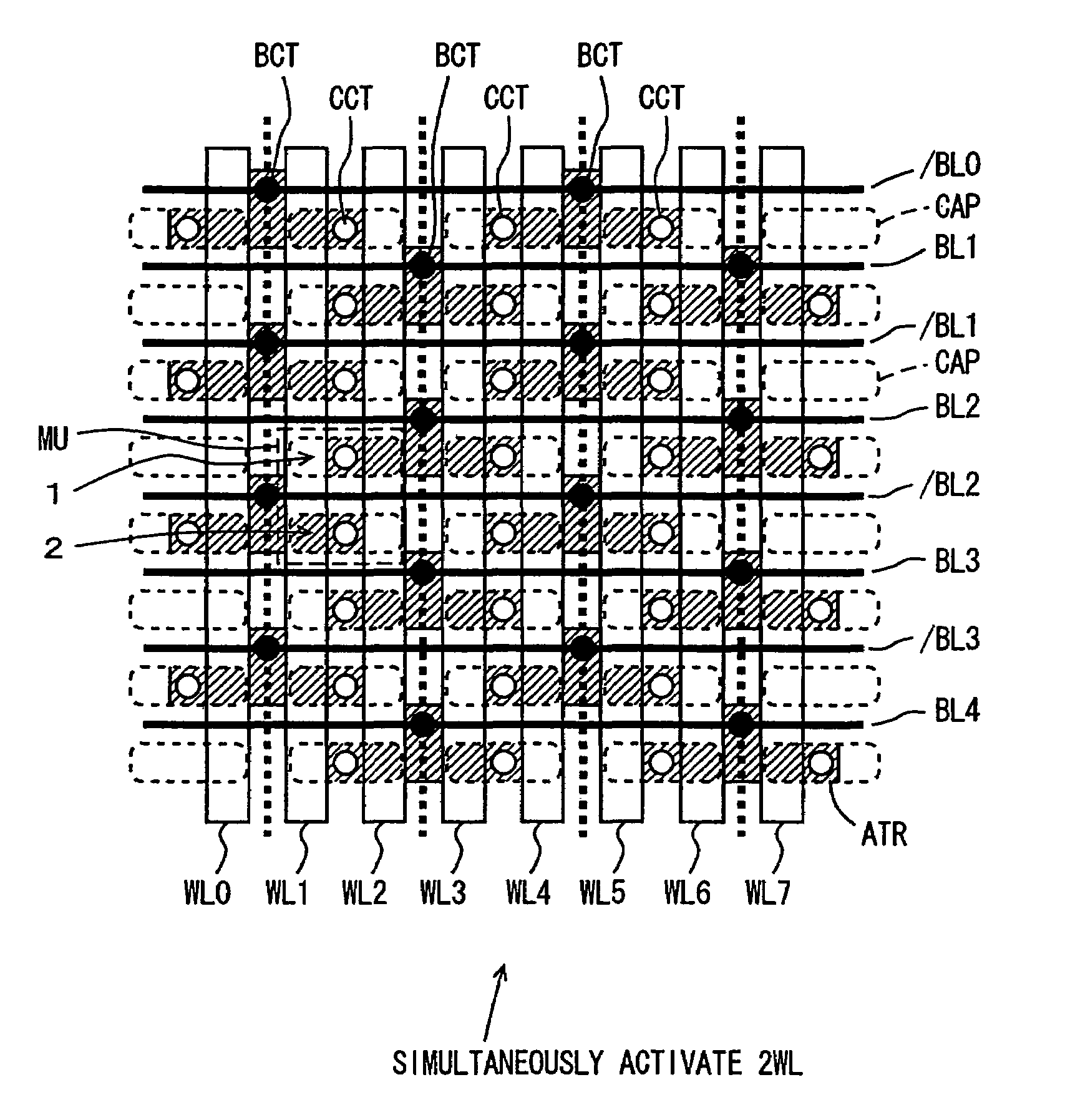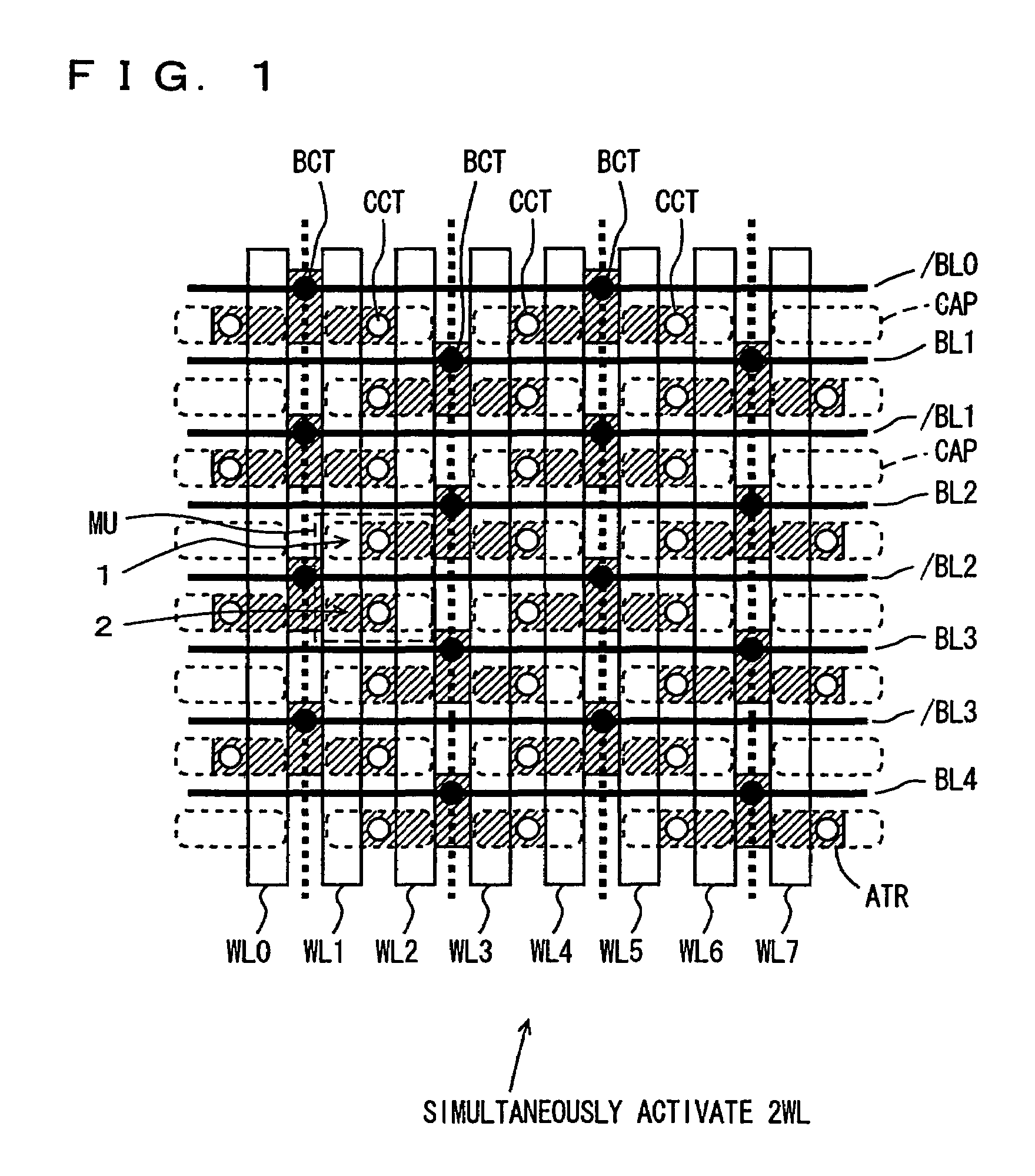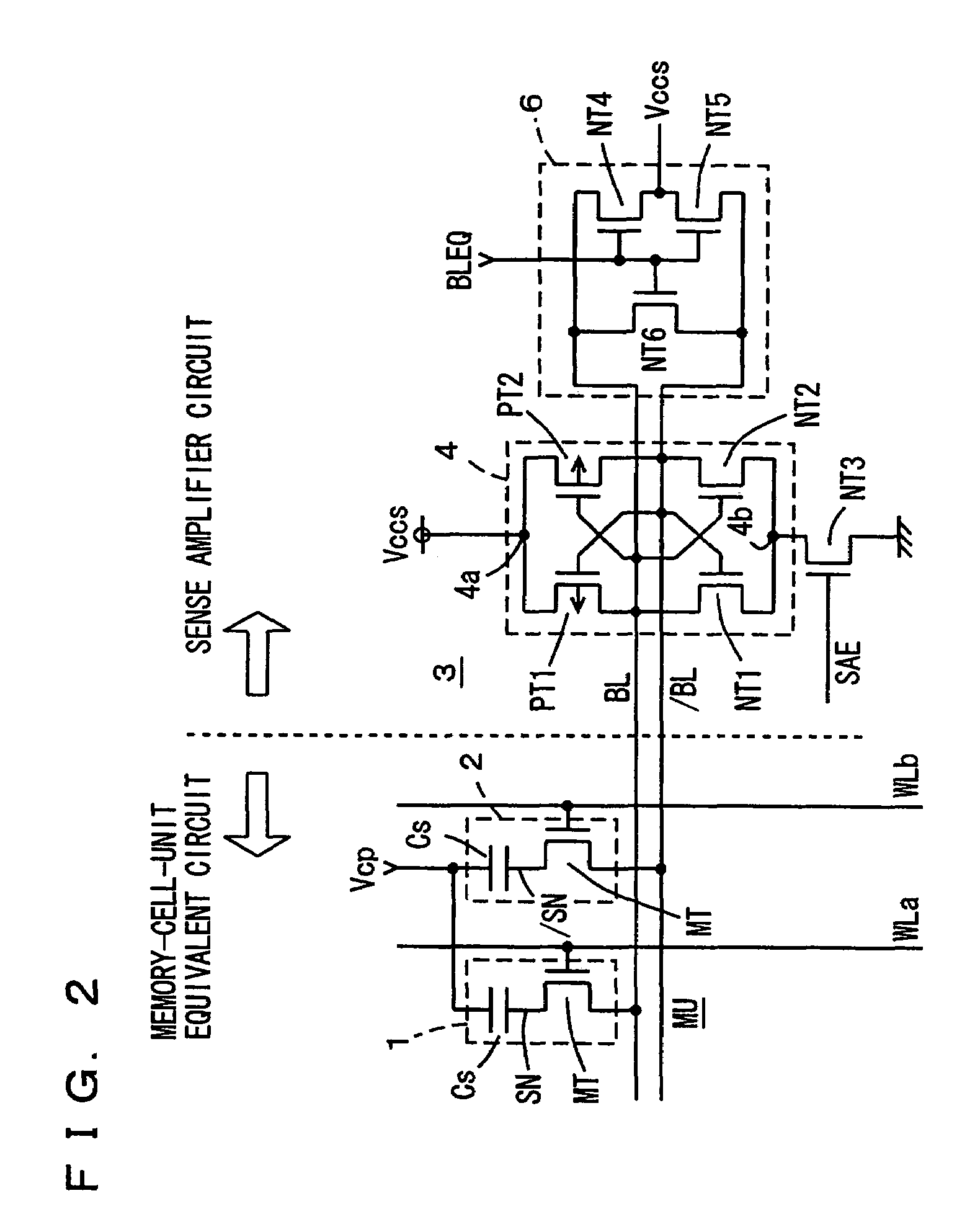Low-power consumption semiconductor memory device
a memory device and low power consumption technology, applied in semiconductor devices, digital storage, instruments, etc., can solve the problems of reduced processing efficiency, misreading data, and disadvantageous increase of active standby current (iccb>3/b>)
- Summary
- Abstract
- Description
- Claims
- Application Information
AI Technical Summary
Benefits of technology
Problems solved by technology
Method used
Image
Examples
embodiment 1
[0079][Embodiment 1]
[0080]FIG. 1 is a diagram schematically showing the layout of an array portion of a semiconductor memory device according to Embodiment 1 of the present invention. In FIG. 1, reversed-T-shaped element active regions ATR are arranged in row and column directions. Element active regions ATR in adjacent columns are shifted from each other by two rows. Bit lines BL and / BL are provided for respective columns of the element active regions. FIG. 1 representatively shows bit lines / BL0, BL1, / BL1 . . . BL3, / BL3 and BL4. Each of bit lines BL1 to BL4 and / BL0 to / BL3 is coupled to element active region ATR of the corresponding column through a respective bit line contact BCT.
[0081]Memory cell capacitors CAP are provided on each element active region ATR so as to be opposite to each other with respect to a bit line contact BCT. These memory cell capacitors CAP are arranged being aligned in the row and column directions. Each memory cell capacitor CAP is coupled to the cor...
embodiment 2
[0132][Embodiment 2]
[0133]FIG. 10 is a diagram showing the structure of a main part of a semiconductor memory device according to Embodiment 2 of the present invention. FIG. 10 shows the structure of a portion associated with one memory unit MU. Like Embodiment 1, memory unit MU includes storage elements 1 and 2 each having an access transistor and a capacitor. A sense amplifier circuit 3 is provided for bit lines BL and / BL. Similarly to Embodiment 1, sense amplifier circuit 3 includes: a sense amplifier 4 including cross-coupled P-channel MOS transistors and cross-coupled N-channel MOS transistors; and a sense amplifier activation transistor NT3 for activating sense amplifier 4 in response to activation of a sense amplifier activation signal SAE.
[0134]A bit-line precharging / equalizing circuit 16 is provided in order to precharge bit lines BL and / BL to the sense power supply voltage Vccs level in the standby cycle. Bit-line precharging / equalizing circuit 16 includes: P-channel MOS...
embodiment 3
[0142][Embodiment 3]
[0143]FIG. 14 is a diagram schematically showing the structure of a main part of a semiconductor memory device according to Embodiment 3 of the present invention. FIG. 14 shows the structure of a portion associated with one memory cell unit MU. In the structure of FIG. 14, bit-line precharging / equalizing circuit 6 transmits ground voltage GND onto bit lines BL and / BL instead of sense power supply voltage Vccs.
[0144]Bit lines BL and / BL are precharged to the ground voltage GND level. Therefore, in sense amplifier circuit 3, sense power supply node 4a of sense amplifier 4 is coupled to the sense power supply line through a sense amplifier activation transistor PT6 that is rendered conductive in response to a sense amplifier activation signal / SAE. Sense amplifier activation transistor PT6 is formed of a P-channel MOS transistor. Internal node 4b of sense amplifier 4 is coupled to the ground node. Bit-line precharging / equalizing circuit 6 has the same structure as ...
PUM
 Login to View More
Login to View More Abstract
Description
Claims
Application Information
 Login to View More
Login to View More - R&D
- Intellectual Property
- Life Sciences
- Materials
- Tech Scout
- Unparalleled Data Quality
- Higher Quality Content
- 60% Fewer Hallucinations
Browse by: Latest US Patents, China's latest patents, Technical Efficacy Thesaurus, Application Domain, Technology Topic, Popular Technical Reports.
© 2025 PatSnap. All rights reserved.Legal|Privacy policy|Modern Slavery Act Transparency Statement|Sitemap|About US| Contact US: help@patsnap.com



